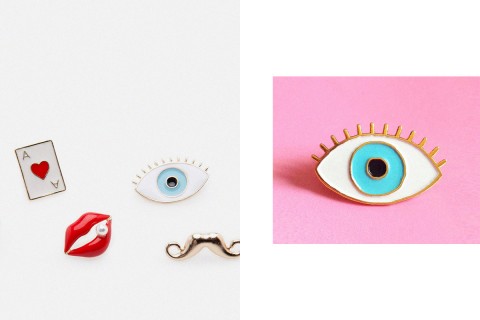The very nature of fast fashion dictates that it must keep up with current trends at all times unlike more traditional brands who are working on seasonal offerings almost a year before they reach the general public. While fast fashion is certainly not a new phenomenon, the brands who are most well known for being quick to the marketplace are becoming less noted for their efficiency and more notorious for their usage of plagiarism in order to achieve what has been described as, “mind-spinningly supersonic” speeds.
In particular, Spanish retail giant, ZARA, has been accused of stealing ideas from Tuesday Bassen, an independent artist, whose past clients include Playboy, The New Yorker, United Nations, Nike and adidas.
Although the popular euphemism dictates “good writers borrow, great writers steal,” ZARA’s flippant response to the controversy has all the feelings of a 1980s high school movie villain who gives people swirlies and doesn’t even lie about it when brought into the principal’s office.
“We reject your claims here for reasons similar to those stated above: the lack of distinctiveness of your client’s purported designs makes it very hard to see how a significant part of the population anywhere in the world would associate the signs with Tuesday Bassen,” ZARA’s statement read.
“(They claimed) I have no base because I am a small artist with 90k followers on Instagram, but they are a major corporation with 90 million customers and only ‘a handful of people’ would notice that the designs are mine,” Bassen told Dazed. “I plan to pursue this further, even though they are trying to belittle and bully me.”
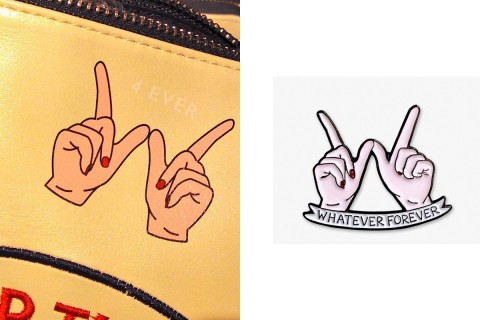
In subsequent days, a website aptly titled “shoparttheft.com” has appeared in which an additional 40 artist’s works have been compiled side-by-side with their ZARA counterparts to showcase just how prevalent the fast fashion retailer’s nefarious tactics have become.
ZARA’s statement in regards to Tuesday Bassen’s concerns focused on her “small potatoes” empire. But for an independent artist or designer, 90,000 followers on Instagram gives her the potential reach of over a million USD in sales given the average price of one of her designs ($12 USD).
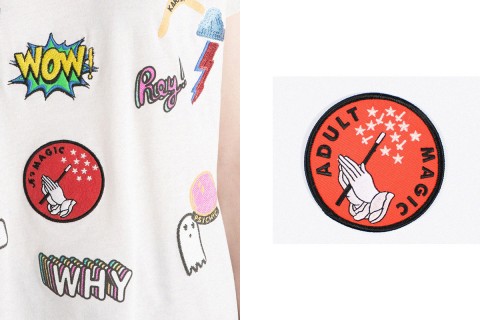
With 40 cases of thievery on record, clearly someone at ZARA sees the value in executing designs that thousands of other people have shown interest in.
Bassen has gained an additional 60,000 Instagram followers since the scandal broke – indicating that people want to support the Real McCoy and instantly knocked up the artist’s companies potential valuation by over $700,000 USD if you are to believe that each new follower could show their support by buying a pin.
But the problem isn’t solely reserved to ZARA. Inditex, the Spanish multinational clothing company headquartered in Arteixo – and parent company of ZARA – is also accused of using subsidiaries like Bershka, Pull&Bear, and Stradivarius to complete an additional smash-and-grab trifecta.
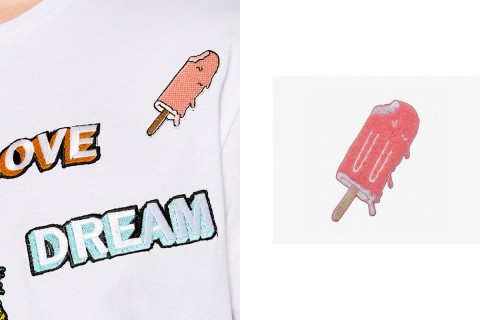
Unlike other brands, ZARA’s infrastructure allows for the ability to skirt one of the major issues that most fashion institutions face; not having enough time.
According to Slate, “Zara commits six months in advance to only 15 to 25 percent of a season’s line. And it only locks in 50 to 60 percent of its line by the start of the season, meaning that up to 50 percent of its clothes are designed and manufactured smack in the middle of the season.”
Additionally, ZARA’s factories reserve 85 percent of their capacity for “in-season adjustments.”
One of the reasons ZARA might feel so inclined to skirt the rules and morality of copyright law is that they’ve already engaged in a Goliath vs. Goliath entanglement with Christian Louboutin.
In 2012, ZARA avoided any penalties stemming from a lawsuit from a year prior in which Louboutin tried to bar ZARA from selling a particular pair of $70 USD red-soled heels because they might create “consumer confusion.” While a French judge initially sided with the plaintiff, the court of appeals ruled that Louboutin’s trademark registration was too vague and fell in line with an early decision where Louboutin lost in a red-soled fight against YSL.

Amancio Ortega, ZARA’s owner and the richest man in Europe, is known for his down-to-earth demeanor despite his immense wealth. He’s known to wear a blue blazer, white shirt and grey trousers every day — none of which is a Zara product – and is often seen eating in Inditex’s cafeteria surrounded by his employees instead of fine dining in Arteixo.
Ortega grew up the son of a railway worker and a housemaid who were often unable to afford even the most basic of items in their row house. By 13, he was working in a clothing shop, Gala, in La Coruña and by his early twenties he was making women’s bathrobes for his first company, GOA, after organizing thousands of women into sewing cooperatives. Needless to say, Ortega didn’t come from money and he began his career in fashion much in the same way how some of the designers he and his staff have been accused of stealing from got their starts.
In a rare profile in Fortune, the world got a glimpse at fast fashion in action and how the rules about copyright are often murky.
“From inside, [Ortega] glanced out his window and saw the young biker leaning over the handlebars, jean jacket decorated with appliquéd patches, a throwback to the 1970s. The man in the car, decades older than the biker, zoomed in on the jacket. The old man grabbed his cellphone and, as the story goes, called an aide in his office. His eyes still fixed on the biker, the man described the jacket’s stitching, its shape and color, and signed off with a single instruction: ‘¡Hácedla!’ Make it.”
A situation in which ZARA would have used the aforementioned artwork “in all media including print, online, and broadcast in perpetuity” would have cost them about $25,000 USD. Thus, it would have hypothetically cost the company a million dollars to “do the right thing” as it relates to the 40 artists making claims.
Yes, there is the off-chance that an artist would want more money – or not want to be associated with ZARA at all – but the cost seems like absolutely nothing given Amancio Ortega’s 73 billion USD fortune.
The case could also be made that ZARA’s tactics are part of a much larger mechanism in fashion in which larger retailers help bring greater awareness to trends that are occurring below the surface level. Whereas “imitation is often the biggest form of flattery,” the very fine line which exists between homage and plagiarism is fertile soil which often can validate the work of designers that they are tapping into culturally relevant themes that appeal to a large market.
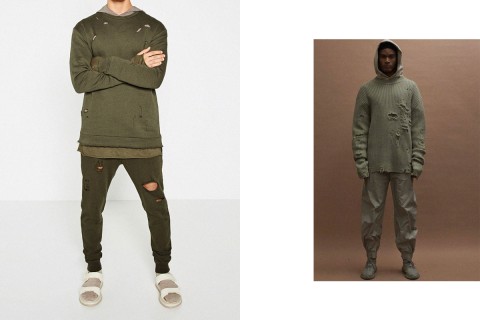
One of ZARA’s most high-profile cases of plagiarism involves their alleged copying of Yeezy Season 2 for their “Streetwise” collection and once again when they matched the desert neutrals for additional offerings that closely resembled YEEZY Season 3.
“You can have on a ZARA pant, right? And a girl walks in with the Celine version, and you feel like shit. That is the problem,” Kanye West said in regards to products deemed fast fashion versus those with more upscale roots.
Not all fashion juggernauts have chosen to ignore outrage as it relates to plagiarism.
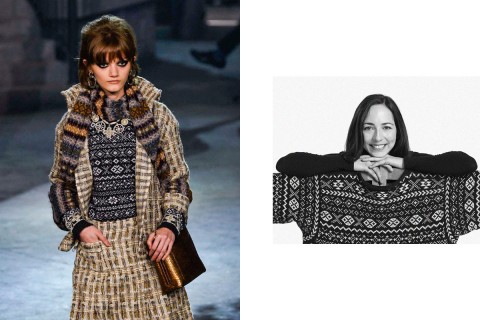
In 2015, Chanel issued an apology after Mati Ventrillon, a small Fair Isle knitwear brand based in the Shetland Islands, Scotland, accused the brand of ripping off a design.
“Chanel will credit Mati Ventrillon by including the words ‘Mati Ventrillon design’ in its communication tools to recognize her as the source of inspiration for the knitwear models in question,” read the press release from Chanel. “Chanel recognises that this situation resulted from a dysfunctionality within its teams and has presented its apologies. Chanel also recognises the heritage and know-how of Fair Isle. Chanel wishes to emphasize that the house is extremely vigilant in terms of its respect for creativity, whether its own or that of others.”
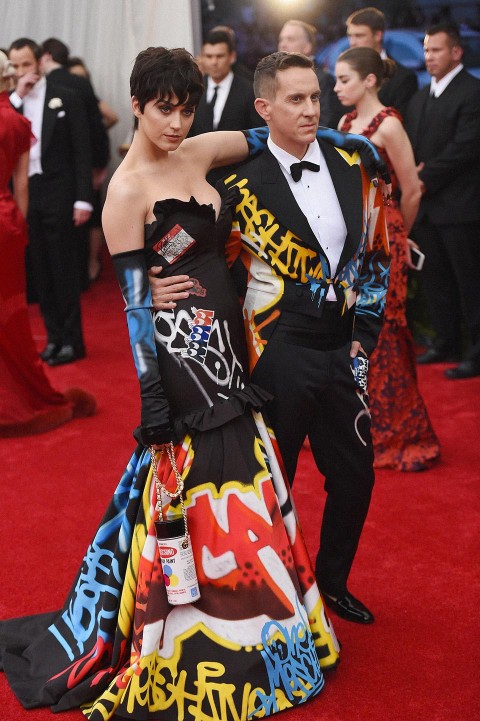
ZARA’s approach seems to mirror that of Jeremy Scott and Moschino who were sued by MSK graffiti writer, Rime, who stated that his Detroit mural Vandal Eyes and own tag had been used without his permission – most notably seen on a dress worn by Katy Perry at the Met Gala. Rather than acknowledge that they had pilfered Rime’s work, they tried to undercut his and graffiti in general’s value much in the same way ZARA looked to social media numbers as a means of intimidating Tuesday Bassen.
“As a matter of public policy and basic logic, it would make no sense to grant legal protection to work that is created entirely illegally. Brazen and willful violations of the law cannot, and, indeed, should not result in the award of copyright privileges,” read Jeremy Scott’s statements about his usage of Rime’s Vandal Eyes mural.
Jeff Gluck, Rime’s attorney, who has also represented fellow graffiti artist, REVOK, in his lawsuit against Roberto Cavalli, seems similarities between Tuesday Bassen’s case and the instances of using graffiti without the artist’s consent.
“It looks like ZARA copied the actual artwork, the same lines, the same flourishes, the same detail,” he says. “This is much more than substantially similar.”
Since Tuesday Bassen’s work focuses on recognizable objects – albeit unique unto her style of art – I posed a hypothetical for Gluck in which there is a scenario where “I paint a picture of a stop sign,” and then “he paints a similar painting of a stop sign.”
“If you paint a regular red stop sign, you don’t own the idea of red stop sign paintings,” he says. But if your stop sign painting is unique enough, and amounts to an original work of authorship, and then someone uses a design that looks substantially similar to your specific painting (same lines, same detail, same unique look and feel, layout, coloring, positioning etc), then they might be liable for copying your painting.”
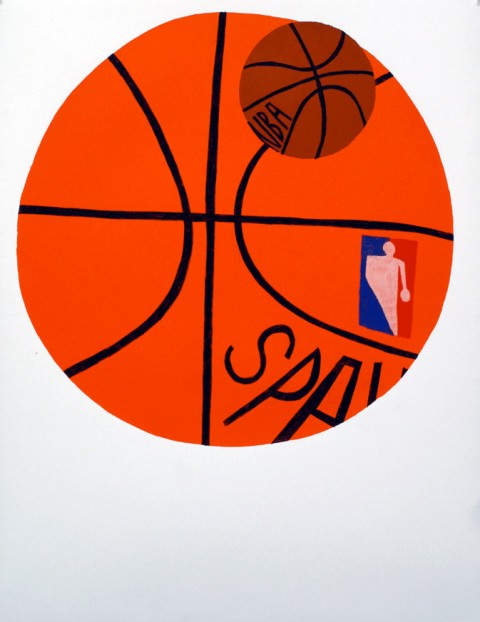
Gluck doubles down on his assessment by referencing Jonas Wood’s basketball painting.
“This is an original work,” he says. “If someone copied this, it would be copyright infringement. But if someone just used an image of a regular orange basketball, it would not be a violation.”
If one takes a look at ZARA’s alleged thievery, there seems to be a clear indication that they’ve overstepped their bounds. No, Tuesday Bassen doesn’t own the copyright to a heart. But, once she creates a lollipop version with three white lines, and ZARA copies it, she has a reason to be upset.
While plagiarism unto itself is a huge problem in fashion, the cost just to defend one’s intellectual property can often make potential plaintiffs weary of wading into legal water.
In Tuesday Bassen’s case, her initial letter of contact with ZARA reportedly cost her $2,000 USD. Despite the potential for thousands more to be poured into a legal battle, both Bassen and Kurtz (the man responsible for setting up shoparttheft.com) have requested that no one set up or donate to crowdfunding sites set up in their names.
ZARA is actually no stranger to being on Tuesday Bassen’s side of things. In April 2016 they threatened to sue the owner of a small Barnard Castle, UK-based business called Zara Countrywear, of which Donna Dobson named after her newborn daughter.
Dobson ultimately began rebranding her business as Fox & Field and was forced to cover $1200 USD worth of ZARA’s legal fees.
Speaking to the Daily Mail, Dobson said: “As distraught and upset as I was about the injustice of it, I had no choice. I’m a small, sole trader and if I tried to fight the case and didn’t win I could have lost not only my business but also my farm.”
It remains to be seen if ZARA will be forced to pay damages to 40 of the artists who allege copyright infringement. Regardless, they would be wise to reappropriate the white flag for once and wave it with a ferocity so that every independent artist can feel the breeze.

